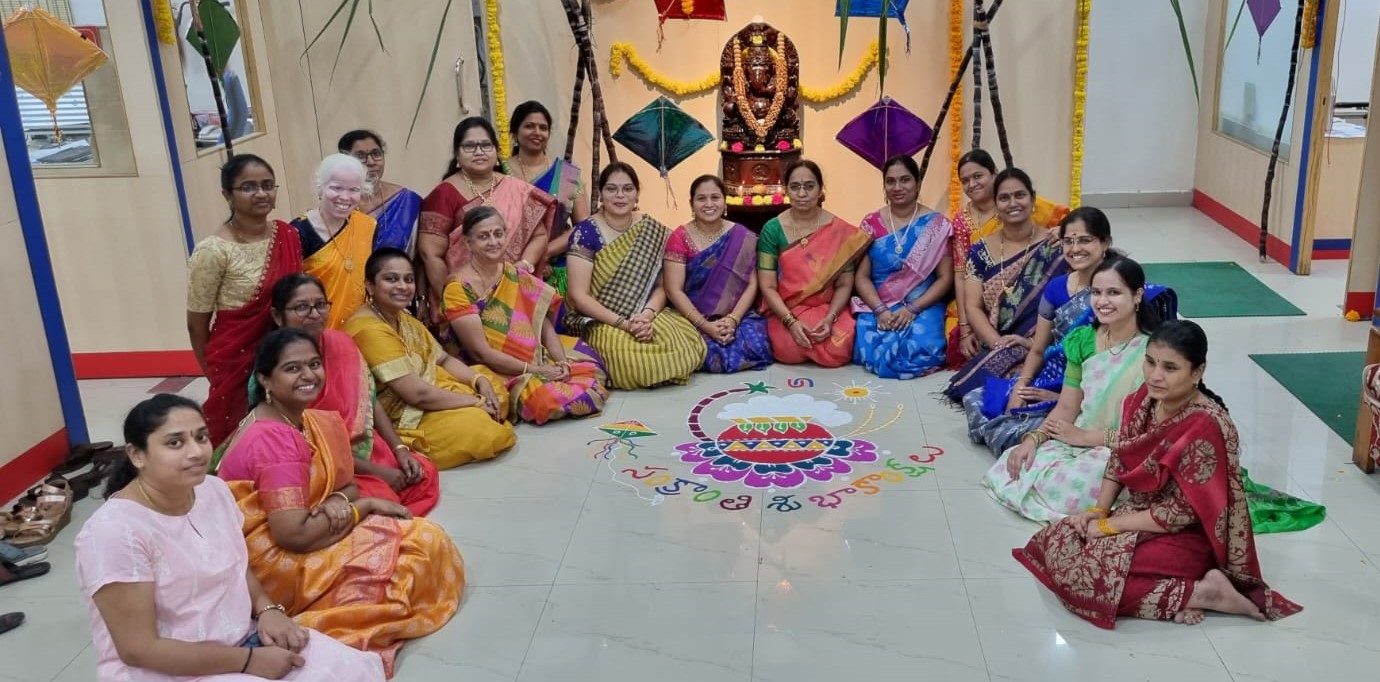Villages and towns in coastal Andhra Pradesh are all decked up for the three-day Makara Sankranti festival.

Sankranti celebration at a public-sector bank in Andhra Pradesh. (Supplied)
Villages and towns in coastal Andhra Pradesh are all decked up for the three-day Makara Sankranti festival.
Bhogimantalu, rangavallulu, gobbemallu, ariselu, pongali, and kodi pandalu sum up the three-day Makara Sankranti festivities.
The first day’s festivities begin with Bhogi, which falls on 13 January this year, followed by Sankranti and Kanuma.
Sankranti, also called Pedda Panduga (Big Festival), heralds the harvest season. The real essence of the Sankranti festival is seen in the villages.
People make it a point to travel back to their native places to celebrate Sankranti with their families and relatives, despite the fact that the festival is traditionally associated with celebrating the harvest.
Sankranti is believed to be a time for homecoming. Bhogi is an important part of the Sankranti celebrations because it marks the beginning of the holiday that lasts for three days.
The Sankranti festival begins with the ceremonial burning of old belongings in a bonfire (Bhogi Mantalu) on Bhogi Day, which represents the wish to begin anew.
“Tradition states that getting rid of old objects is associated with letting go of vices, and it is regarded as a sacrifice ceremony. Women put out rangoli and gobbemmalu — cow-dung balls — and decorate them with turmeric, vermillion, and flowers, and sing traditional folk songs around them, wishing everyone well,” explained AVR Sastry from Moghalarajapuram in Vijayawada.
Children look forward to Bhogi more than any other ceremony because it requires them to spend the day before it gathering firewood and other discarded items for the bonfire.
“The sight of children playing around a fire while the air smells of burning wood on a foggy morning is one of my favourite things to witness,” said K Tarun, an IT employee who lives in Poranki.
In the Hindu month of Dhanurmasam, which comes before Sankranti, women create lovely rangoli and place the gobbemmalu — cow-dung balls — on them every day.
The gobbemmalu are adorned with grains, flowers, turmeric, and red vermillion. Around these rangoli, women dance and sing traditional songs.
On Bhogi, the final day of the Dakshinayanan festival, which also happens to be the summer solstice, a traditional bonfire called the Bhogi Mantallu is ignited. The gobbemmalu is used in this fire as fuel.
It also denotes the conclusion of one phase and the commencement of a new chapter.
On Kanuma day, too, people make payasam using this gobbemmalu as fuel and offer it to god.
To pray for well-being, ward off the evil eye, and elicit blessings from elders, young children are showered with a mixture of flower petals, Jujube berries (Bhogi pandulu), and money in the evening on the Bhogi day.
On Sankranti day, a lot of sweets — including a special preparation called Arisealu — are produced and distributed.
Sweet pongal is created and offered to the sun on Sankranti.
On the third day, Kanuma, cattle that labour in the fields and contribute to a bountiful harvest are decorated, revered, and fed pongal.
Sankranti is also called Makara Sankranti as it indicates the entry of the Sun into the Makara Rasi (Capricorn in astrology).
From this day onward, the sun begins its “ascent” in the sky.
This movement of the sun denotes the end of winter, and more significantly, the beginning of Uttarayana, and the commencement of an auspicious phase in the Hindu almanac. The day itself is considered very fortuitous.
Ariselu is an important and traditional sweet prepared for Sankranti. Women in families start preparing ariselu and stock them up some 15 days before the festival.
Ariselu is made from broken rice, jaggery, and clarified butter.
“I have seen my mother and grandmother prepare ariselu at least 15-20 days before Sankranti. Nowadays, in this fast-paced world, it’s not possible to prepare them. It’s all changed now. We buy them from stores,” said Saranya Naveen from Guntur.
So, how’s ariselu made? A dough of rice flour or ground and soaked rice with molten jaggery is first prepared. The dough is kneaded and then flattened in small portions in a similar fashion to making poori or chapati.
These flattened portions are fried in ghee or oil. Finally, these are pressed in gingelly or sesame seeds or poppy seeds.

Apr 25, 2024

Apr 25, 2024

Apr 25, 2024

Apr 24, 2024

Apr 24, 2024

Apr 24, 2024